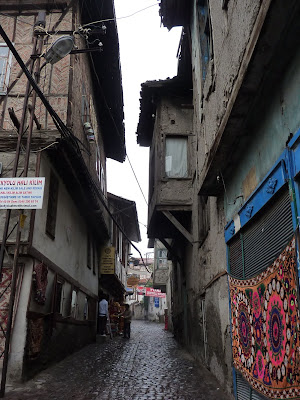 |
Reconstructed wall
|
 |
Vicki at the entrance to the lower city
|
 |
Me by the green stone, said to be a gift of the pharoah on the occasion of the Kadesh
Treaty; why this was not carted away, I don't know |
 |
Portion of the lower city
|
 |
Huge earthen jars
|
 |
Archaeology still going on: a German team
|
 |
Some restoration/replacement of items taken to museums in
Ankara, Berlin, and Istanbul |
 |
Remains of original on other side of arch
|
 |
70m tunnel under the western wall, Yerkapi
|
 |
Sort of pyramid at Yerkapi
|
 |
Rugged countryside in which all this is located
|
 |
King's gate, reconstruction of what is now in Ankara
|
 |
Vicki by the king's gate
|
 |
Wall inscription near the royal citadel
|
 |
Part of citadel
|
We had the place nearly to ourselves for a couple hours--a young woman from Australia was the only other visitor. But then the tour buses started arriving, and we headed on to Cappadocia.













































.jpg)